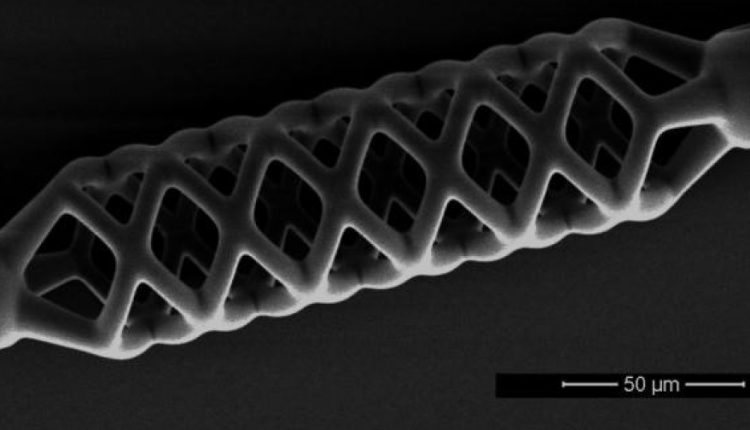Urethral strictures prevent urine from passing out of the body and instead collects in the bladder where it can reach life-threatening levels. And it’s not as rare as you may think. One in every thousand children across the world develops this affliction – sometimes in the fetus.
To solve the problem, pediatric surgeons must surgically remove the affection section of the urethra and sew the open ends back together again. It would be a far simpler procedure – and easier on the kidneys – to simply add a stent that would widen the constriction. The procedure could even take place while the fetus was still in the womb.
However, it hasn’t been possible, using conventional methods, to produce a stent small enough for a fetus. But Gaston De Bernardis at the Kantonsspital Aarau has been working with the Multi-Scale Robotics Lab at ETH Zurich to develop a new method to create stents smaller than 100 micrometers in diameter.
“We’ve printed the world’s smallest stent with features that are 40 times smaller than any produced to date,” says Carmela De Marco, lead author of the study and Marie Skodowska-Curie fellow in Bradley Nelson’s research group. The group calls the method they’ve developed indirect 4D printing. They use heat from a laser beam to cut a three-dimensional template – a 3D negative – into a micromold layer that can be dissolved with a solvent. Next, they fill the negative with a shape-memory polymer and set the structure using UV light. In the final step, they dissolve the template in a solvent bath and the three-dimensional stent is finished.
It’s the stent’s shape-memory properties that give it its fourth dimension. Even if the material is deformed, it remembers its original shape and returns to this shape when warm. “The shape-memory polymer is suitable for treating urethral strictures. When compressed, the stent can be pushed through the affected area. Then, once in place, it returns to its original shape and widens the constricted area of the urinary tract,” De Bernardis says.
But the stents are still a long way from finding real-world application. Before human studies can be conducted to show whether they are suitable for helping children with congenital urinary tract defects, the stents must first be tested in animal models. However, the initial findings are promising, “We firmly believe that our results can open the door to the development of new tools for minimally invasive surgery,” De Marco says.
Story via ETH Zurich

